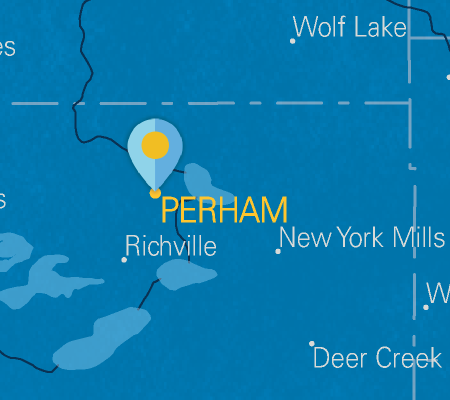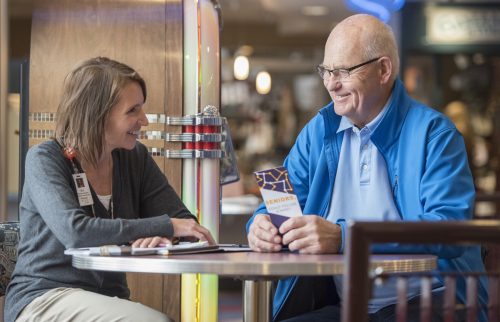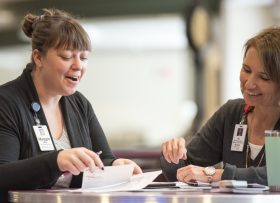
A cross-sector collaboration to connect seniors to caregiving resources takes flight in Perham
“The problem isn’t the number of services in the area. It’s people knowing about them.”

Getting the right kind of access to healthcare and support services is a challenge, particularly for the elderly or caregivers to older family members.
That’s the way Maggie Fresonke, population health coordinator for Perham Health, frames the challenge the community faces with elder care. It’s a challenge many communities face. And it’s what motivated Fresonke and other stakeholders in the Silos To Circles program, which is a coalition of organizations from across the spectrum of health care and social services in Minnesota, looked to address. Silos To Circles, which Blue Cross and Blue Shield is recognizing with a Trailblazer award, brings leaders together to promote an integrated approach to health care delivery. In Perham this meant launching the Connection.
“Silos to Circles started about two and a half years ago when Perham Health was awarded a planning grant to address delivery of senior care in the community,” says Fresonke. “We asked ourselves: what are we going to do to keep seniors in their homes as long as possible? What we determined was that even providers like us had no idea of all of the services that existed. And if we didn’t know about all of them, we figured seniors didn’t either. So, we came up with the idea of having a “connector,” someone to help residents navigate their options. An air-traffic controller if you will.”
Fresonke and the other Perham stakeholders collaborated through Silos To Circles with leaders from three other communities — Moorhead, Chisago, and Crosby — to design a plan, which was facilitated by the Collective Action Lab in the Twin Cities. From that work came funding and Jill Harder started working in the “connector” role in July of this year.
“People call us for services for themselves or a family member or neighbors and the need covers all kind of things,” Harder says, noting that she gets many referrals from Perham Health Hospital. “Before we got started, we heard a story about a woman who had several falling incidents. As it turns out, it was happening while walking her dog and simply finding someone else to walk her dog solved the problem. These are exactly the kinds of things that we’re here for.”

The Connection employs a full time person to help seniors understand and navigate their options, helping them – and their families – connect to the right services while staying in their homes for as long as possible.
Erin Schultz is a social worker at Perham Health. She’s the person who refers seniors to Harder. She’s overjoyed to be able to hand out Harder’s contact info when requests come in because it means more seniors are getting assistance in a timely manner.
“It’s so great to give out a local phone number to people and know they will receive follow-up right away,” Schultz says. “We’re already seeing the benefits. One gentleman came in looking for resources for his mom, who is having some memory changes. He wanted to know the transportation options and how to work with Meals On Wheels. Before I would hand out a packet of information. But now I was also able to hand out Jill’s number. She knows the whole spectrum of available resources and has time to work with people. That’s huge.”
While the Connection is still in its infancy, Harder is optimistic that it will grow in its usage as word gets around. For now she is spending a lot of time talking up the Connection at Chamber of Commerce and Rotary meetings and visiting senior centers.
“It’s still pretty new and people are getting used to it but it feels great to help people problem-solve, especially at a time when they feel vulnerable. It can be intimidating for seniors to make those phone calls and advocate for themselves,” she says. “But people know that we’re from here and we know this community and we’re here to help. State resources are nice but you just can’t beat that local touch.”
